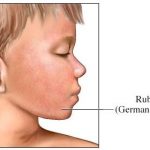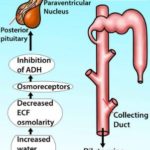Mastoiditis
What is Mastoiditis?
Amongst the most basic ear structures is a mastoid bone. Even though it is referred to as a bone, this mastoid does not have the common features of other bones in the body. It consists of air sacs and looks like a sponge, instead of being rigid and solid as many bones.
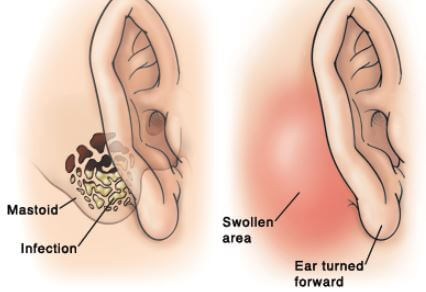
For the mastoid to function well, it has to get air from other ear parts like the Eustachian tube. Once an infection occurs in the middle ear causing blockage to the Eustachian tube, it will cause an infection inside a mastoid bone. This grave condition is referred to as mastoiditis.3

Once the mastoid cells are inflamed or infected, mostly because of unresolved infections in the middle ear, this condition can develop. In the case of acute mastoiditis, the infection can spread further from the mastoid bone causing grave health issues. This condition mostly affects the small children, but adults are also prone to being affected as well.
Epidemiology
In most developed nations and the United States, the issue of mastoiditis is very low, about 0.04%, though higher in the developing nations. This condition is common amongst children aged two up until thirteen months. This is the period when ear infections are most common in children. The condition affects both females and males equally.
Causes
Mastoiditis is majorly as a result of an infection in the middle ear. This infection can extend towards the mastoid bone. Once the bone, which has a structure of a honeycomb, is full of the infected substance, it can break down. Before the invention of antibiotics, many children died of this ailment. This condition is however not common nowadays. It is not as dangerous today. 1,2,3
Symptoms & Signs
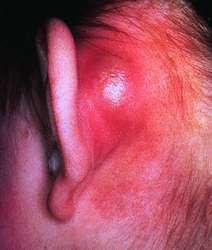
The signs of this ailment are identical to those of ear infections. They are:2,3,4
- Severe headache
- Pain in the ear
- Fever
- Drainage from the infected ear
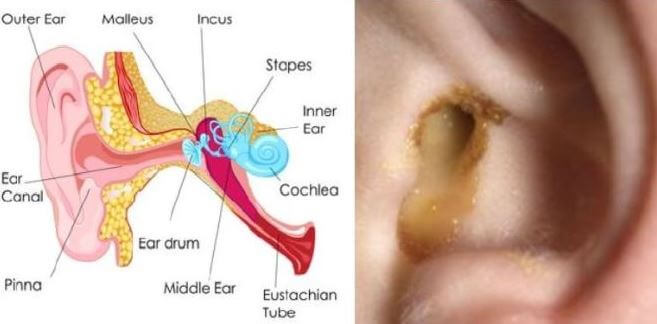
- Loss of hearing in the infected ear
- Tenderness, redness and swelling being the infected ear
- Tiredness, high temperature and irritability
In some instances, mastoiditis can cause a brain abscess to develop as well as other issues related to the skull. In the severe cases of mastoiditis, the ear will droop or bulge.
How to Diagnose Mastoiditis?
In case you have an infection in the ear, the medical practitioner will take a look at your head and ears to establish if the infection has gone to the mastoid bone. Since the mastoid bone is situated in the middle ear, it can be hard seeing it because of the infection. The doctor will therefore have to carry out other tests to ratify the diagnosis. Some of the tests will include: 3
- A skull x-ray
- CT scanning for the head and ear
- MRI scanning for the head and ear
- Counting of the white blood cells to check for infection.
Once the tests are positive for mastoiditis, the doctor can also perform a spinal tap or lumbar puncture. These tests will permit the doctor to establish whether the infection is available in the spinal column.
Treatment
The chronic cases of mastoiditis are treated using oral antibiotics, regular cleaning of the ear by the doctor or administering eardrops. If the aforementioned treatment procedures do not work, surgery will be done to avoid more complications.1,4
If a patient is diagnosed with severe mastoiditis, they will be put in hospital to get the necessary care and treatment from an otolaryngologist, the doctor specialized in throat, ear and nose disorders. Antibiotics will be issued via an intravenous line (IV) to cure the ailment.
Surgical procedures can also be required so as to drain the infected fluid from the inner ear, a process known as myringotomy. During this process, the doctor creates a minute hole inside the eardrum so as to relieve the pressure and remove the fluid from the inner part of the ear. A tiny tube can also be inserted in the middle ear to hinder the fluid getting inside the inner ear and for ventilation.
In serious cases of the ailment, a surgical process can be required to get rid of the infected bone at the back of the ear. If this condition is not treated, it can lead to health and life threatening complications like brain abscess, hearing loss, meningitis and blood clot. But once the antibiotic treatment is appropriate and timely, the complications can be evaded and one can recover fully.
It is however advisable that if you have any ache in your ear, a discharge or issues hearing, to visit a doctor.
Once you have a surgical procedure for mastoiditis, you will be needed to take a period of about two weeks off work. Caution must be taken to ensure that the infected ear does not get wet. The doctor must give you particular advice as soon as the surgery is over as well as at any other appointments.
Complications
Even though many people suffering from mastoiditis do not face grave complications, the treatment is not easy and chances are high that the infection may recur. Treating mastoiditis is hard since the mastoid bone is situated inside the ear. Severe health issues can arise if the treatment method is not effective or when the infection is not treated before the mastoid is damaged. Some of the health issues are:
- Facial paralysis
- Loss of hearing
- Dizziness or vertigo
- Sepsis
- Epidural abscess ( pus collecting on the outer region of the spinal cord and brain)
- Meningitis ( a membrane bacterial infection covering the spinal cord and brain) 2,4
Prevention
Mastoiditis can be prevented by effectively treating all infections related to the ear. If you have any infection in your ear, make sure that you seek immediate medical attention as well as adhere to the advice given by your doctor. This can include intake of oral antibiotics for a period between 7 and 10 days.
All the medical intervention must be done early to avoid the disease getting worse. So as to stay away from serious health complications it is therefore paramount for the doctors to monitor the patients to ensure that the infection does not spread or return. There are instances when the disorder will return after a successful treatment.
Reference List
- http://Www.Webmd.Com/Cold-And-Flu/Ear-Infection/Mastoiditis-Symptoms-Causes-Treatments#1
- http://www.nhs.uk/conditions/mastoiditis/Pages/Introduction.aspx
- http://www.healthline.com/health/mastoiditis#overview1
- Mastoiditis. https://medlineplus.gov/ency/article/001034.htm
- https://www.medicinenet.com/mastoiditis/article.htm
- emedicine.medscape.com/article/2056657-overview
- https://www.amplifon.com/web/uk/hearing-health/mastoiditis
- www.stanfordchildrens.org/en/topic/default?id=mastoiditis-90-P02048
- https://patient.info/doctor/mastoiditis


